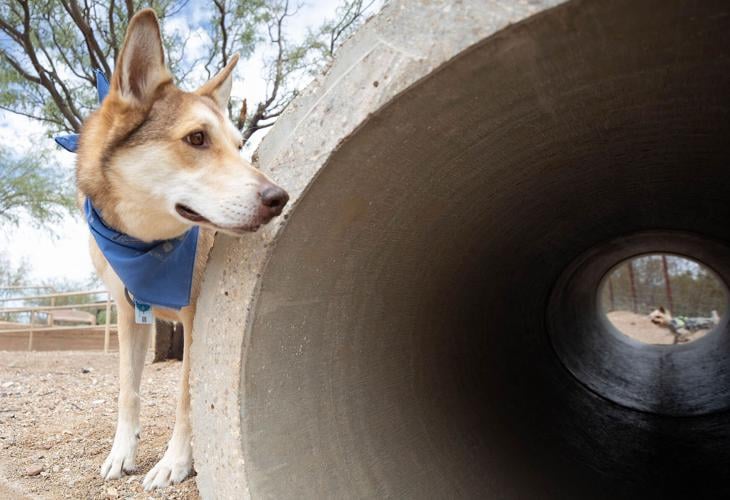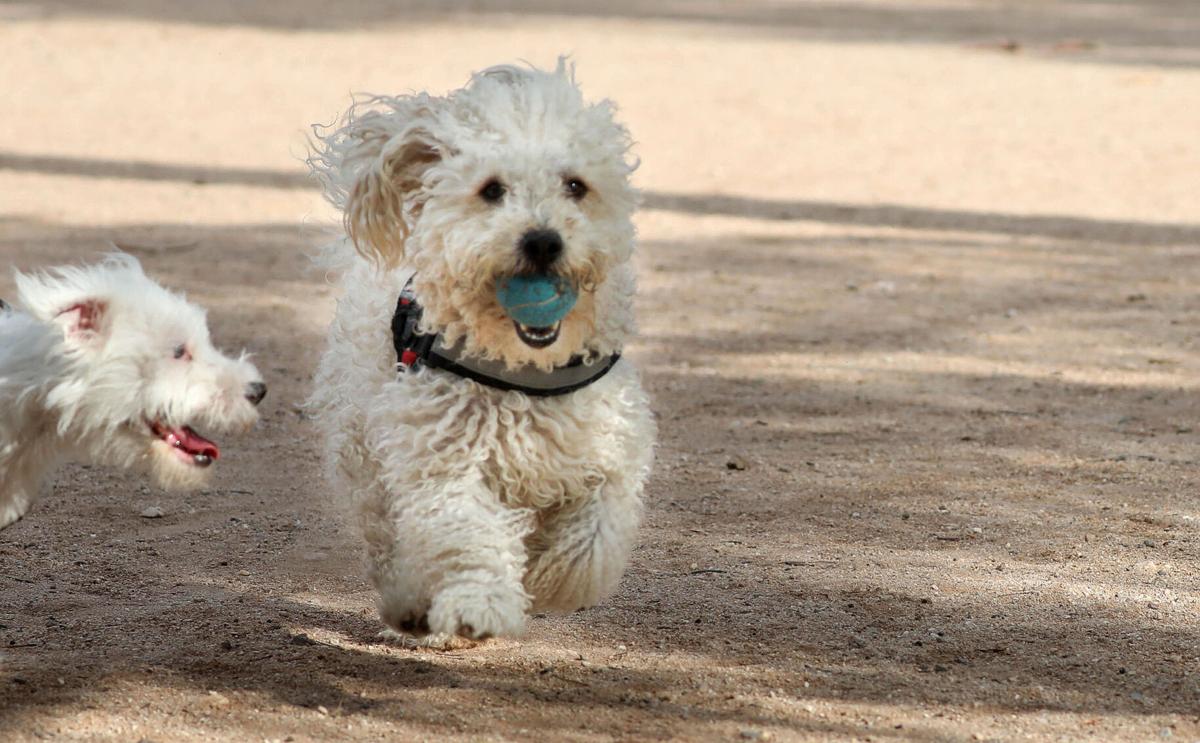Picture your last dog walk. You are walking in your neighborhood or on a trail, and suddenly your dog gets into that familiar tripod squat position. Unfortunately, you forgot the poop bags at home.
Why is this a big deal? Surely dog poop here and there won’t hurt anything. Particularly on a hike in the Tucson desert or the forest — after all, plenty of other animals poop here, too.
Let’s take the first scenario, where the occasional dog poop is left in an urban area. Essentially, it is raw sewage, and contains various viruses, protozoa and bacteria that are harmful to people, other pets and wildlife. Bacteria found in dog waste can include Salmonella and E. coli; intestinal parasites Giardia and Cryptosporidium are also found in dog waste. These pathogens can be present even in healthy dogs that don’t have any symptoms of infection.
These organisms can all cause disease in humans, and may be present even in pets that are well-cared for. To up the ick factor, bacteria from dog waste becomes aerosolized, which means humans can breathe it in. In a 2011 study, researchers identified dog feces as “a dominant source of bacteria in the outdoor air in the metropolitan areas sampled here, particularly Cleveland and Detroit.” Similar studies in 2021 and 2022 have shown air contamination with bacteria from dog feces in Athens, Greece, and Moscow in the Russian Federation.
In the next rainstorm, pet waste flushes down our drains and ends up in our waterways, polluting them and spreading disease.
“Picking up after your pet and not littering and not disposing of oils and chemicals on the ground helps protect our water resources,” Pima County’s Regional Wastewater Reclamation Department Director Jackson Jenkins said via email. “Basically, anything discarded onto the ground … can and does get washed away by stormwater.” This pollution then “makes its way to our aquifer where these contaminants have the ability to negatively affect our ground water,” Jenkins said.

Barkley walks over to a tunnel at George Mehl Family Foothills Park — Smiling Dog Ranch while other dogs run around at 4000 E. River Road.
Dog poop in recreational areas harms ecosystems
When dog poop is left out in the desert or the forests, the same idea applies — it spreads diseases to wildlife and pollutes our rivers and groundwater. But there is an additional problem: dog waste contains a lot of extra nutrients which can throw off the balance in our delicate ecosystems.
When a wild animal poops in the desert, they are part of that ecosystem. The nutrients in their poop came from the ecosystem and the poop is recycling and returning those nutrients. In the case of pet waste, however, the nutrients it carries came from outside the ecosystem — way outside, in most cases, since pet foods are processed and trucked from areas around the United States and even from other countries. Thus each dog poop is adding excessive nutrients into the system.
What do those extra nutrients do? In a 2022 study in the journal “Ecological Solutions and Evidence,” scientists found that pet waste results in toxic levels of nitrogen and phosphorus in the soil. They studied a nature preserve where dogs were allowed to walk on leash and over 18 months measured the amount of nitrogen and phosphorus in the soil near the walking paths. The researchers estimated that dog waste in the soil surrounding footpaths resulted in depositing about 10 pounds of nitrogen and over four pounds of phosphorus per acre on average per year, with busy sites getting as much as 28 pounds per acre of nitrogen and 12 pounds per acre of phosphorus each year. All of the phosphorus and half of the nitrogen were from dog feces; the other half of the nitrogen was from dog urine, which, obviously, isn’t so easy to pick up. Other studies have found that these elevated amounts of nutrients are found in the soil as many as three years after dogs have been banned from parks or preserves.
This increased fertilization impacts our native plants significantly. Other studies have found that both nitrogen and phosphorus increase the amount of non-native species, and essentially act as fertilizers for thick growth of a few plants, reducing the biodiversity in an area. The extra non-native plant growth then requires expensive management, such as mowing or removal.
Elise Gornish, cooperative extension specialist in ecological restoration at the University of Arizona’s School of Natural Resources and the Environment says via email “when you add fertilizer to arid systems … almost always it’s the invasive plants that benefit. Fertilization can cause water stress in native plants because it encourages growth even in the absence of adequate water.” She also points out that dog waste “could actually turn into a food safety issue as lots of folks do foraging in areas where dogs are walked.”
Besides the environmental and health issues, having dog poop piling up in our neighborhoods and recreational areas is just unsightly and smelly. It’s also illegal in the state of Arizona and in the City of Tucson. Pima County also requires owners to pick up their pets’ waste with fines between $100 and $500 and up to 30 days in jail for noncompliance. In National Forests, you must also pick up your dog’s waste right away, even if your dog is off-leash. This is also true for National Parks that allow pets.
How to reduce your dog’s impact on our desert
When you’re walking your dog, always pick up the poop. Most city parks have trash cans, and some even have pet waste bags available. You can also carry plastic grocery store bags so you always have something with you. There are also many products on the market, including biodegradable poop bags. Your pet’s waste can then be thrown in the trash.
Jenkins says that “Animal waste such as dog feces can be flushed down the toilet just like human waste,” but if you pick up the waste in plastic bags, “it is best to throw it all in the trash so it goes out as solid waste to the landfills.”
Additionally, it’s best to keep your dog leashed, so the impact of their waste is limited to areas around walking paths. This makes control of plants easier to manage.
If your neighborhood or local recreation area is having trouble with dog poop, check out this resource created by the State of Arizona called LeashUp/Clean Up online at tucne.ws/lucu. It helps citizens mount local campaigns to reduce the amount of pet waste in neighborhoods and parks. The toolkit includes social media posts, videos, logos and a strategy for tackling the problem.
You can also report pet waste issues to Pima County by calling the Pima Animal Care Center at 520-724-5972. For more information, visit the Pima County Animal Waste Complaint website at tucne.ws/wastecomplaints.






